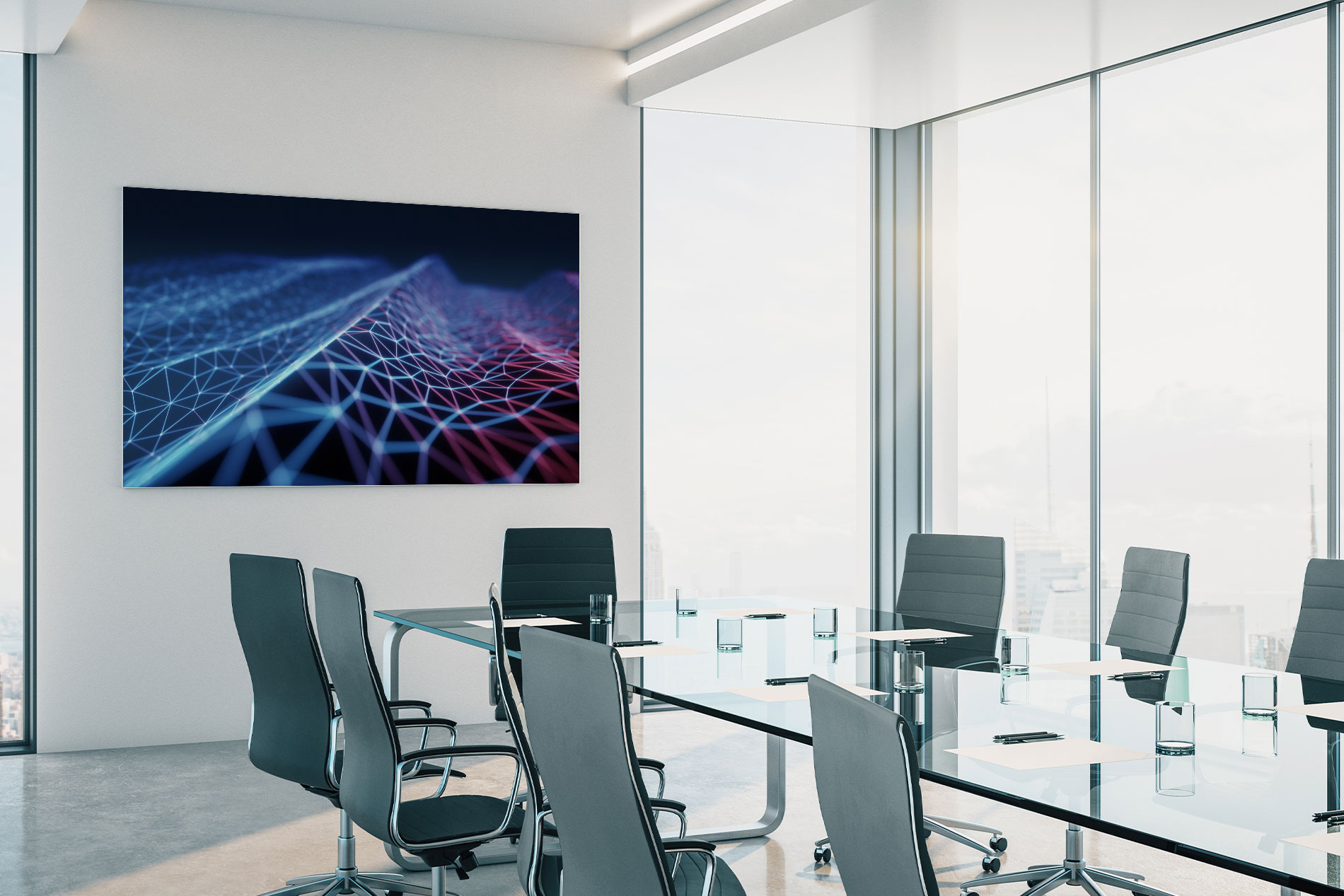Room Acoustics and Treatments for UC and Beyond.

One of the more frustrating experiences that a client can face is approving a capital expenditure on a world class UC system that simply sounds terrible. We’ve seen this repeatedly on both the Sales and Service sides of the business when supporting a client or performing a site survey during a needs analysis. An individual with a trained pair of ears can almost “feel” a poorly performing room upon entering.
Each of our staff that interact with clients are trained on the practical side of evaluating the acoustics of a space. The analysis can be as simple as a clap or as complex as evaluating the RT60 of a space within an acoustic analyzer software package. But, there is no amount of investment in technology that can solve the problems of a space that has poorly performing acoustics. Garbage in, garbage out as the adage goes.
Below are handful of standard acoustic evaluation metrics to be aware of when evaluating a space or the performance of an audio system.
-RT60: A measurement of the reverberation of a space. This is the measurement of an induced sound to decay to the same level of 60db (1/1000th of the original testing level), or to the point that becomes bare audible. Below are some examples to translate this metric into real world contexts.
-Living room,0.5–0.7sec.
-Recording studio,0.5–1sec.
-Conference room, 0.7 – 1.5 sec.
-Concert hall,0.75–2.5sec.
-House of worship,0.9–1.5sec.
-Cathedrals,1.2–3.5sec.
-%ALCONS: A measurement of the percentage of lost articulation in consonants in speech being tested. A result of 8-10% ALCONS is considered acceptable.
-STI (Sound Transmission Index): A metric testing from the other direction of &ALCONS. Instead of measuring the loss, this metric measures what’s retained. A result of .75-1.0 is considered excellent for STI.
-Noise Criteria (Background Noise): NC ratings provide a means of rating the level of background noise in a space that any audio system needs to exceed to be intelligibe. This information is critical to know as most AV design specifications mandate that the audio system perform at a minimum of 25db-SPL above the background noise of the space.
Here are a few typical NC ratings of spaces for context.:
-Private office | NC35
-Conference Room | NC 35 – 45
-Videoconferencing Room | NC 25 – 35
-Corridor | NC40–50
Taken together, these three classes of metrics capture three different elements of every space that we work.
1: RT60 evaluates the room’s acoustic response.
2: STI/%ALCONS Measures the performance of the audio system in relation to the space.
3: NC evaluates the external intrusive noise that the system must exceed to be performant.
An ideal conferencing space that we find meets our bar for a quality meeting environment typically has an RT60 ~0.5-1.0s, STI of ~.85, and a NC of ~40dB. While this seems like nonsense without the above context and measurement equipment to evaluate equipment a spaces for these criteria, with the above information providing context it becomes clear what these numbers are aiming to provide.
After obtaining these metrics, we can then start making recommendations on actions to take to alleviate issues with each class of issue. An overly reverberant space (high RT60) would benefit from absorption (sometimes simply carpet or acoustic panels). A space with a high level of intrusive noise from HVAC system, traffic, other users (high NC) could use more insulation via material in the walls, double glass windows, better seals on the doors etc…. A system showing a non-performant STI may need an upgrade in speakers/DSP/Amp or an EQ adjustment to add more level to lost frequencies.
If you’ve stuck through this long winded tour of the tools CoitCom will use to evaluate a space it has been beneficial, it has hopefully be informative. If your conferencing spaces look similar to the featured image on the post and are experiencing issues that this article has outlined (and hopefully) clarified, reach out and we’ll come onsite to evaluate your system to enable your team to get the most out of your AV investment.
